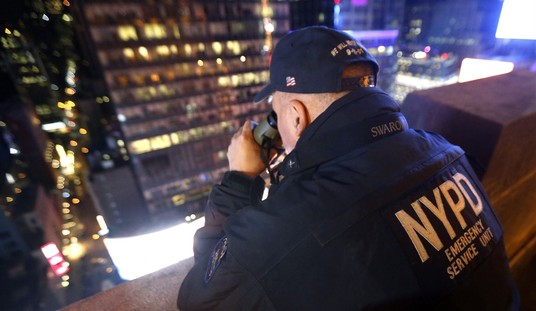“Upset by the lack of unity in the United States, a Philadelphia graphic designer has redesigned all 50 state flags using a common design theme,” Jon Gabriel writes at Ricochet:
Ed Mitchell of the Philadelphia design firm Bresslergroup limits the colors to red, white and blue, and features only bold, simple designs. Gone are those troublesome state seals, mottos and other text that might hint at divergence from the collective “we.”
The designer explains:
I was immediately bothered by how discordant [state flags] are as a group, and I wasn’t surprised to learn they break just about every rule of flag design… When you look at them all together, there’s no indication they come from the same nation.
Unfortunately this is an accurate representation of where we are right now as a country. We can’t seem to get anything done. But we used to. As a tribute to the collective creativity that brought us this far — and, truth be told, to the “united-ness” I hope we adopt in the future — I embarked on a project to redesign all fifty state flags.
Emboldened by the Obama campaign’s elevation of graphic design over ideas or experience, Mitchell wants to eliminate partisanship with a top-down vexillological solution. Color me vexed.
As Jon asks, “I’m sorry, but on what planet is this…”

Perhaps Mitchell’s existing work can be paid off via equally Starting from Zero currency envisioned by another graphic designer in 2010. I’m willing to chip in an Obama dollar or two to stop it from going forward.

What I find fascinating is the increasingly elderly mentality lurking behind these “futuristic” redesigns. The Bauhaus existed 90 years ago in Weimar, Germany. As part of that socialist nation’s own economic woes, the Bauhaus had their own experiments in currency design. The Helvetica font was created 55 years ago in Switzerland.
Otto von Bismarck would be proud — it’s one of the curious paradoxes of modernism that artists who hold themselves out as “progressives” and “modernists” have straightjacketed themselves into design forms which are well over half a century old.
[jwplayer config=”pjmedia_eddriscoll” mediaid=”66342″]
Related: On second thought, perhaps these designers are onto something — we might as well have new forms to match, if we’re moving into the Brave New World of post-Weimar America.










Join the conversation as a VIP Member